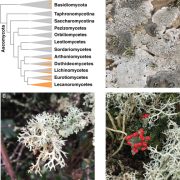
Essay: The coming golden age of lichen biology
Plant Science Research WeeklyLichens are remarkable, complex symbiotic organisms. They have evolved multiple times independently, but all lichen include at least one fungal partner (the mycobiont) which they usually resemble morphologically, and at least one cyanobacterial or algal photosynthetic partner (the photobiont). This partnership…

Going against the botanical grain: Non-Fibonacci spirals in early land plants
Plant Science Research WeeklyThis study by Turner et al. looks at the patterns of leaf and sporangia arrangement in early leafy plant species, questioning the widely held idea that these structures follow the Fibonacci sequence. The researchers investigated fossilized remains from the Early Devonian period. To evaluate the spatial…
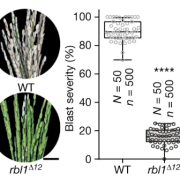
Genome editing to enhance broad-spectrum disease resistance in rice without compromising yield
Plant Science Research WeeklyDeveloping broad-spectrum disease resistant crops without compromising the yield has been a persistent challenge in maintaining global food security. In a breakthrough study, Sha et al. developed a promising multi-pathogen resistant rice mutant that retains the crop’s yield, using forward genetic screen…

Shifting microbial communities can enhance tree tolerance to changing climates
Plant Science Research WeeklyLike all of Earth’s lifeforms, plants are already experiencing hardships due to the changing climate, and these stresses will get more extreme. Much effort has gone into breeding crops for climate resilience, less on trees which are both more diverse and less genetically tractable. Here, Allsup et…
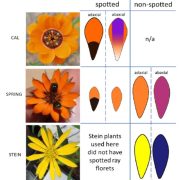
A closer look at the pigmentation patterns of those South African daisies, Gorteria diffusa
Plant Science Research WeeklyRecently, we highlighted a sexually deceptive daisy that mimics a female bee-fly to attract the male pollinators. In a recent preprint, Fattorini et al. take a closer look at the factors that specify the petal pigmentation pattern. The authors looked at three morphotypes with different spot patterns,…

Plant stem cells under low oxygen: metabolic rewiring by phytoglobin underlies stem cell functionality
Plant Science Research WeeklyWhen flooding occurs, soils become saturated and oxygen solubility and diffusion decreases. This situation creates a hypoxic environment in the roots that stresses the plant, causing significantly decreased growth. However, the quiescent center (QC) stem cells, located in the root apical meristem, are…
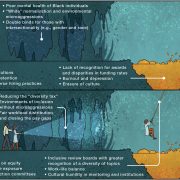
Juneteenth in STEMM and the barriers to equitable science
Plant Science Research WeeklyRecently, the United States designated Juneteenth as a new federal holiday, which celebrates freedom of the last large body of enslaved Black Americans following the American Civil War. However, the impact of chattel slavery persists: Black scientists face many obstacles to attaining an education and…
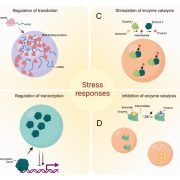
Review: Stress-related biomolecular condensates in plants
Plant Science Research WeeklyBiomolecular condensates are non-membrane-bound compartments containing proteins and RNAs with key functions in stress responses. In plants, they occur as several types with different properties and components, including stress granules and processing bodies. Protein domains such as prion-like domains…
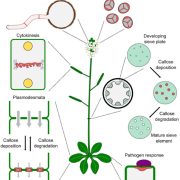
Update: Callose synthesis in plant development – an evolutionary insight
Plant Science Research WeeklyCallose is a polysaccharide with amorphous, gel-like properties that often serves as a transient matrix in plant cell walls. Callose deposition at plasmodesmata can regulate the movement of molecules between cells, transient callose deposition in phloem sieve elements occurs in response to stress, callose…

